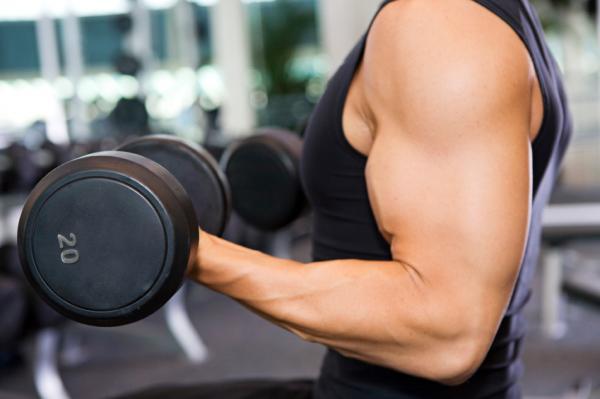Whether you are lifting for strength or lifting for size, the rate of muscle growth might actually stay the same. Many try to disprove this by pointing out the visual differences between powerlifters and bodybuilders when in fact, their muscle size is quite the illusion due to the fact that powerlifters tend to have a higher body fat percentage than bodybuilders, giving them a softer look instead of a more cut look as bodybuilders tend to have.
What Science Has To Say About This
Recent studies show that hypertrophy (muscle growth) occurs whether you are lifting heavy or lighter weights, doing a small amount of reps, or going for high reps, as long as you lift to failure during each set. This means that you are lifting until your muscles literally give out and you cannot perform even one more rep. The study revealed that the same amount of muscle growth and protein synthesis occurred during a 3 set session of 30 percent of the maximum load as it did with a 3 set session of an 80 percent maximum load.
The lifters who performed their reps with 30 percent of the maximum load, naturally achieved more reps compared to lifting at 80 percent of their maximum load, but they still achieved the exact same hypertrophy response.
This shows that the amount of weight or the number of reps did not matter when it comes to hypertrophy and it’s likely that the act of reaching failure instead of built up muscle fatigue seems to be the trigger for growth.
The Difference Between Lifting to Failure VS Fatigue
To be clear, lifting to failure is where you reach the point in your set after a few (or maybe a lot) reps where you cannot lift even one more time no matter how hard you try. Lifting until you’ve reached fatigue involves the number of sets you’ve completed or the time spent lifting. For instance, you do 12 reps and 3 sets with a rest in between each set, by the 4th set you no longer have the capacity to do any more reps and the muscles will no longer fire, that’s fatigue.
Muscle failure is biomechanical, while muscle fatigue is biochemical. Failure has more to do with what’s outside of your body, while fatigue has more to do with what’s on the inside. So going to muscle failure does not mean that you have fatigued the muscle.
The Best Load For Muscle Gains
From what we have learned today, muscle gains can be achieved whether you are at 30 percent or 80 percent of your max load. In order to reach hypertrophy with this method, each set must be done to failure. Both ranges were compared using 3 sets of an unknown number of reps that allowed the lifters to achieve failure. We do know that the lifters who were lifting only 30 percent of their max, were doing more reps as stated in the studies.
Safety should always be a first priority. A person should not lift to failure while doing exercises such as bench presses, dead lifts, or squatting at the rack. This can be quite dangerous unless you are using a strong and focused spotter.
How VR Can Play a Role
There really is no current substitute to a great workout, but with this research in mind, there is hope that a simple VR workout can offer you a lot more than previously thought. Beyond that, when the technology does exist to allow for muscular endurance to be tested through resistance training in an immersive experience like a VR game or sport, the fitness game will forever be changed in a blink of an eye. Until then, don’t avoid a VR workout even if it does seem like you can’t throw around a lot of weight or kill chest day, as it may still give you many of the results you’ve always wanted without having to wait in line for the pec deck machine.
-Heather Neff, CPT
Do you have know a study that shows how VR can positively impact on your fitness? Post your feedback in the comments sections and one of our editors will get back to you ASAP!


